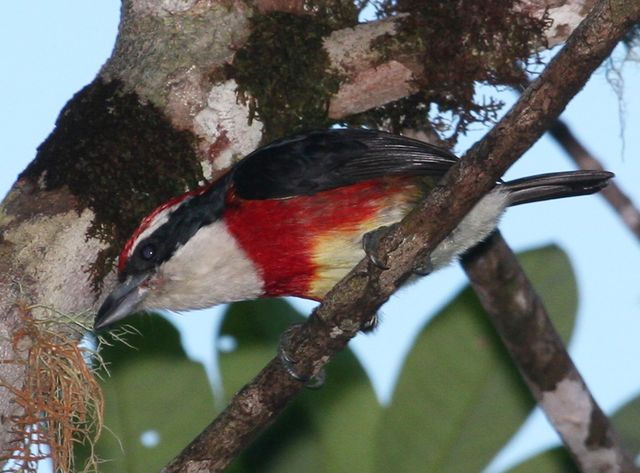
Deep in a remote cloud forest of the Peruvian Andes lives a small bird called the Sira Barbet—the latest addition to the more than 10,000 bird species around the world.
The colorful bird, which has a black mask and a scarlet breast, was discovered in 2008 during an expedition by Cornell University graduates, led by Michael G. Harvey. The Sira Barbet wasn’t described until the July 2012 issue of The Auk, according to Science Daily.
The new species was found in the high elevation cloud forest of the Cerros del Sira mountain range, which boasts steep ridges and deep gorges. These environments create microclimates that allow unique and individual species to evolve, which is why this bird was only recently discovered. Another reason it took so long to be added to the species list is because it’s in a highly remote area of the world and is a sister species of the similar-looking Scarlet-banded Barbet.
But, don’t worry. Not only does the Sira Barbet have different colors in its flanks, lower back and thighs, but the team also secured genetic evidence that confirms it’s a new species by comparing mitochondrial DNA.
The team chose the scientific name Capito fitzpatricki for the new bird to honor Cornell Lab of Ornithology executive director John W. Fitzpatrick, who was instrumental in discovering seven new bird species in Peru in the ’70s and ’80s.
“Fitz has inspired generations of young ornithologists in scientific discovery and conservation,” said Ben Winger, one of the members of the team, in a statement. “He was behind us all the way when we presented our plan for this expedition.”
It’s always exciting to learn about the new discovery of a bird species because it shows that there are still portions of the world that have yet to be explored. For a colorful and unique bird like the Sira Barbet to stay undiscovered all these years, there has to be many more species yet to be found.



Comments are closed.